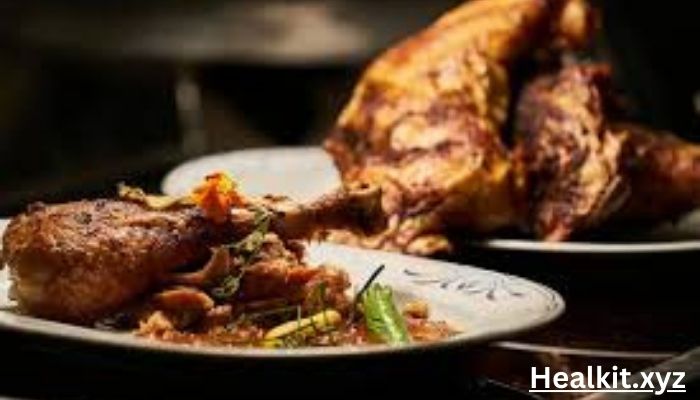What is Pollaste? When becoming a culinary expert, few accomplishments are as fulfilling as flawlessly mastering the craft of cooking poultry. Whether crafting a mouthwatering roast chicken, a delectable turkey, or any other poultry delicacy, attaining that perfect combination of moistness and softness showcases the prowess of a talented chef. Welcome to an exhaustive manual on reaching Poultry Perfection: A Guide to Attaining Moist, Tender Meat Every Time. Throughout this journey, we’ll explore the intricacies of poultry preparation, revealing professional methods and valuable insights to enhance your culinary skills and take you’re cooking to unprecedented levels of excellence.
Which types of pollution are the most widely used?
Roasted Pollaste
To start preparing your delicious roasted chicken, preheat your oven to the temperature you choose, typically between 375°F to 425°F. Next, rinse the chicken under cold water and gently pat it dry with paper towels to remove any excess moisture. Now, it’s time to add flavor! Season the chicken generously with your preferred herbs, spices, and a drizzle of olive oil, ensuring every inch is coated with deliciousness. Carefully transfer the seasoned chicken to a roasting pan or baking dish, placing it breast-side up for even cooking. Slide the pan into the oven and roast until the internal temperature reads 165°F on a meat thermometer. Once cooked to perfection, allow the chicken to rest for 10-15 minutes before carving it into succulent slices to serve.
Fried Pollaste
To prepare delicious fried chicken, combine flour, salt, pepper, and your favorite seasonings in a shallow dish. Coat the chicken pieces evenly in the flour mixture. Then, in a large skillet or deep fryer, heat oil to 350°F. Gently place the coated chicken into the hot oil, carefully not to overcrowd the pan. Fry each side for approximately 6-8 minutes until they turn a beautiful golden brown and become crispy. For food safety, use a meat thermometer to confirm the chicken’s internal temperature reaches 165°F. Once cooked, transfer the fried chicken to a paper towel-lined plate to absorb any excess oil before serving.
The Art of Pollaste: Components and Methods of Preparation
Crucial Components
Pollaste, a delightful dish, finds its essence in the main ingredients it boasts. Primarily centered around poultry, Pollaste showcases diverse flavors, from the familiar taste of chicken and turkey to the more adventurous palate of quail or duck. Each bird’s unique taste and texture lend itself to many culinary possibilities. Furthermore, Pollaste’s charm extends beyond its core ingredients to seasonings and spices. The dish truly comes to life as a symphony of herbs, spices, and seasonings dance together to create a harmonious flavor profile. While staples like salt, pepper, garlic, and onion provide a solid foundation, adding herbs like rosemary, thyme, and parsley brings a refreshing zest.
Ingredient Substitutions
If you aim to replicate the taste and feel of poultry without actually using it, you can explore plant-based options such as tofu or seitan. These alternatives offer diverse textures and can be seasoned and prepared to provide a similar culinary experience to meat. Additionally, for those with dietary constraints or specific flavour inclinations, various seasoning substitutes exist to consider. For instance, if you’re looking to enhance the taste of a dish, cilantro can be substituted for parsley to infuse a more robust flavour profile. Similarly, to add complexity to your recipes, you might opt for smoked paprika instead of the regular variety, bringing a deeper and smokier essence to your culinary creations.
The Cooking Tradition
When it comes to cooking poultry, there are several methods you can choose from, each offering its unique advantages. Baking is great for cooking whole birds or large cuts because it ensures slow, even cooking that can be enhanced with various herbs and spices. Grilling, on the other hand, is perfect if you’re aiming for that delicious smoky flavour, and it works best with smaller cuts or skewered pieces of poultry, often marinated to keep them moist. If you’re dealing with tougher cuts of poultry, slow-cooking is the way to go. Read More
